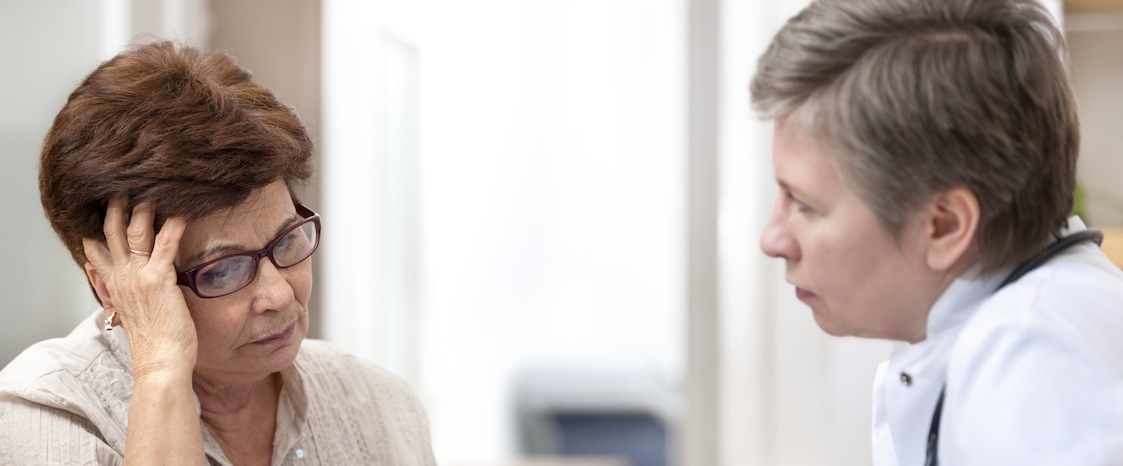Scientific research shows that depression, a mental health disorder that affects 5 percent to 8 percent of adults in the U.S., can be effectively treated with an FDA-approved therapy known as repetitive transcranial magnetic stimulation (rTMS).
Repetitive transcranial magnetic stimulation is a noninvasive and medication-free treatment that typically lasts four to six weeks. During a rTMS session, a magnetic coil is used to stimulate the area of the brain that has been targeted for treatment. No anesthesia is required. And, unlike electroconvulsive therapy, patients receiving rTMS can resume normal activity immediately after treatment.
“What we learned is that there’s a limbic system, the emotional brain, and it is regulated by an area on top of the brain, the newer brain called the prefrontal cortex,” said Dr. Mark George, professor of psychiatry, radiology and neurosciences at the Medical University of South Carolina in Charleston. “In some depressed patients, the prefrontal cortex seemed to be not as active; it was not doing its job. I stumbled onto TMS as a potential noninvasive way to get in and reactivate the prefrontal cortex to help regulate people’s emotional life and actually treat depression.”
Dr. George, who has more than 20 years’ experience with rTMS, worked initially in London and then at the National Institutes of Health in Washington, D.C., where his job, in essence, was using brain imaging to look at the emotional brain.
Benefits of Transcranial Magnetic Stimulation
So how does rTMS work? A TMS pulse is fired on and off for about 3,000 pulses over 20 minutes, which activates the brain.
“It’s almost like lifting weights, on and off, on and off,” Dr. George said. “We did that every day for about four to six weeks. We can get about one-third of patients who are depressed, undepressed.”
According to Dr. George, the biggest benefit of rTMS is that it’s “totally unlike medication, in that it’s quite focal.” He explains that when you take medication by mouth, it goes into your stomach. Some of that crosses into the brain — the whole brain — and only some of that goes into the part of the brain that’s not working right. “Because it’s systemic — it goes everywhere — you have side effects. When it’s in your liver or lungs, it’s causing something.”
TMS, by contrast, stimulates a very small part of the brain. “It’s not systemic, so there really are no major side effects and no interactions with medications,” Dr. George said. “People tolerate the treatments quite well.”
Although it is relatively new — rTMS was approved by the FDA for treating depression in 2008 — there are now about 700 machines in the U.S. and rTMS is starting to be merged into routine clinical practice. Dr. George says that more than half of insurance companies in the U.S. are covering it. “It’s starting to become a standard way to help people get better,” Dr. George said.
Where can people get rTMS for depression treatment? In most major cities there are psychiatrists who have a TMS machine. Patients can self-refer, but most doctors will want to see older records to make sure TMS is appropriate for the patient. It is done as an outpatient procedure in doctor’s offices, Dr. George said.
TMS for Suicidality
In the course of his research, Dr. George noticed that patients who were struggling with depression and suicidal thoughts reported that their thoughts of suicide had decreased after they were treated with rTMS. His team had received Defense Department funding for a two-site study, working with patients who were recently admitted to hospitals for attempting suicide. The patients were given traditional treatments such as counseling and medication, along with high doses of TMS.
“The people who got TMS had a marked decrease in their suicidal thinking within the first day,” Dr. George said. “Their suicidal thinking was cut in half.” The study was published in the May 2014 issue of Brain Stimulation. Dr. George is now working to secure funding to test high doses of TMS for suicidal individuals outside of the hospital setting.
Although suicide is the No. 2 killer of young adults, it is under-researched.
“Every day in America there are 17 veterans who kill themselves,” Dr. George said. “Every year in America we lose an entire medical school class of doctors who kill themselves. In the last Iraq-Afghanistan conflicts, more soldiers killed themselves than were killed by the enemy. Despite all of that, the amount of money going into suicidality research is vanishingly low.”
Other Conditions Where rTMS Holds Promise
A different form of TMS that involves a single pulse to the back of the brain is FDA-approved for patients with migraine with aura. There is also “promising science” in the area of pain and pain management, but no FDA approval yet. In addition:
- Pivotal studies are underway for obsessive-compulsive disorder (OCD), cigarette-smoking and stroke rehabilitation.
- A multisite trial for Parkinson’s disease has been funded by the Michael J. Fox Foundation. However, this trial is not pivotal, meaning it’s not designed for FDA approval.
- Studies on traumatic brain injury are underway.
- Several studies have been conducted to assess the therapeutic potential of rTMS in treating addiction.
- The Yale School of Medicine is studying TMS as an investigational treatment for auditory hallucinations, or “voices,” in patients with schizophrenia.
As for the future of rTMS, Dr. George says it’s a very promising technology. “We need to use the scientific method to see what works and what doesn’t. It’s not going to treat everything, but it is a very interesting way of getting in and interacting with the brain.”


